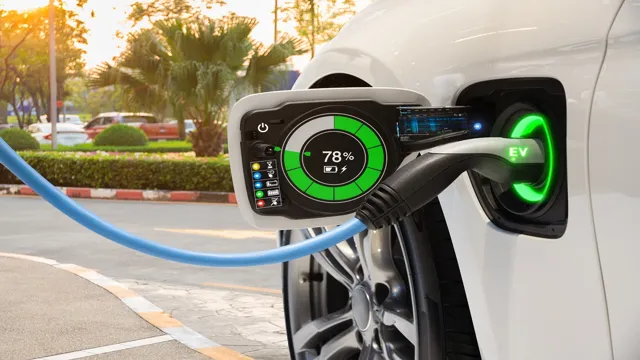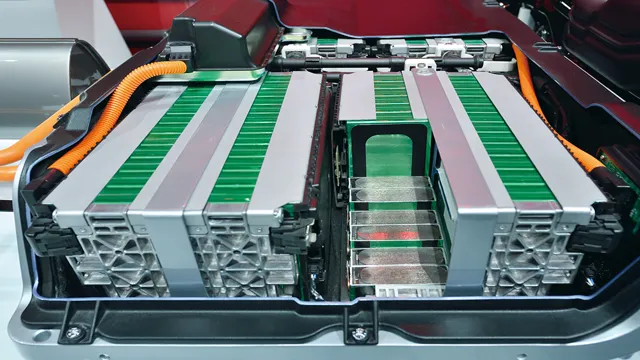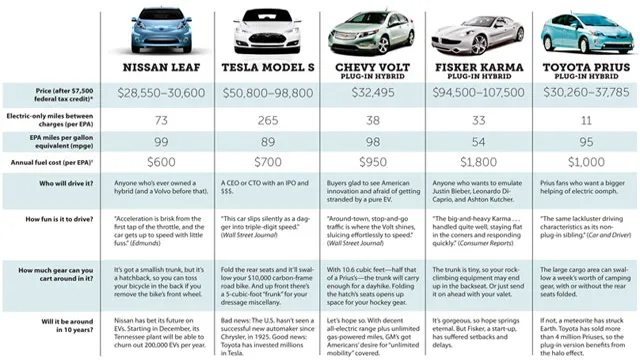Revolutionizing Electric Cars: Exploring Self-Charging Battery Technology
Electric cars have become increasingly popular in recent years due to their environmental benefits and cost savings on fuel. However, some people still wonder about the technicalities behind these electric vehicles. One of the most common questions asked is whether electric cars charge their own batteries.
We’re here to answer that question once and for all. When an electric car is running, does it power its own battery, or does it need an external power source to recharge? Here, we will explain how electric cars generate energy, and how it is stored and utilized to keep electric vehicles running. So, let’s dive in and discover the truth behind electric vehicle technology.
Understanding Electric Car Batteries
Many people wonder if electric cars recharge their own batteries. The answer is both yes and no. While electric cars do not have the ability to physically recharge their own batteries, they do have regenerative braking systems that capture the energy created during braking and use it to recharge the battery to some extent.
However, this regenerative braking system only captures a small amount of energy, so electric cars still need to be charged through external power sources such as charging stations or home chargers. It’s important to note that the battery life and efficiency of an electric car depend on various factors such as driving habits, weather conditions, and the type of battery used. Therefore, it’s essential that electric car owners educate themselves on proper charging habits and battery maintenance to ensure their vehicle’s longevity.
Types of Electric Car Batteries
Electric car batteries come in different types, including Lithium-ion (Li-ion), Nickel-Metal Hydride (NiMH), and Lead-Acid batteries. Among these three options, Li-ion batteries are the most common type used in modern electric vehicles because they have high energy density, meaning they can store a lot of energy in a relatively small and lightweight package. On the other hand, NiMH batteries have a lower energy density but are still popular because they are more affordable than Li-ion batteries.
Lead-Acid batteries, the oldest type, have the lowest energy density, which means they are heavy and bulky. Moreover, they have shorter lifetimes and are susceptible to failure if overcharged. The type of battery an electric car uses will determine the vehicle’s range, weight, and price.
As a result, automakers are continually researching new and innovative ways to develop batteries with a longer lifespan, higher energy density and lower cost.

How Electric Car Batteries are Charged
Electric car batteries have a unique way of being charged compared to traditional internal combustion engines. The batteries found in electric cars are charged using an external power source, such as an electrical outlet or charging station. The plug connects to the vehicle’s charging port, which is typically located on the side or front of the car.
Once connected, the electrical current flows from the charger to the battery, gradually increasing the battery’s charge level. It’s important to note that electric car batteries can take longer to charge than filling up a gas tank, but electric charging times are getting faster as technology advances. Additionally, some electric cars also have regenerative braking technology that charges the batteries while decelerating the car.
Overall, understanding how electric car batteries are charged is crucial for anyone considering making the switch to an electric vehicle.
Regenerative Braking
One of the most fascinating features of electric cars is regenerative braking. This advanced technology not only allows them to recharge their own batteries but also reduces wear and tear on the brake system. Regenerative braking allows electric cars to recapture some of the energy that would be lost during braking and use it to recharge their battery packs.
When the driver applies the brakes, the car’s electric motor switches into reverse mode, which slows down the car while also generating electricity. This electricity is then stored in the car’s battery pack for later use. The process is incredibly efficient, and depending on the car model and driving conditions, regenerative braking can recapture up to 70% of the energy that would otherwise be lost as heat during braking.
So, the next time you hit the brakes in an electric car, remember that you’re not just slowing down—you’re also recharging the battery!
How Regenerative Braking Works
Regenerative braking is an energy recovery mechanism that has become available in many modern electric and hybrid vehicles. This technology allows the kinetic energy produced by braking to be converted into electrical energy, which can be stored in the vehicle’s battery. One of the benefits of regenerative braking is that it can significantly reduce the vehicle’s fuel consumption and emissions.
When the brakes are applied, the vehicle’s electric motor acts as a generator, converting the energy of motion to electrical energy. This is achieved by reversing the direction of the current flow in the motor, which creates resistance to the rotation of the motor shaft. The electrical energy produced during braking is then fed back into the battery, allowing it to be used again when the vehicle is accelerating.
This process reduces the amount of energy that needs to be supplied by the battery, which in turn extends the vehicle’s range. Regenerative braking is an example of how technology is being used to reduce the impact of transportation on the environment, while improving the efficiency of vehicles.
Benefits of Regenerative Braking
Regenerative braking is a technology that is used in modern electric and hybrid vehicles to recharge the battery while slowing down or stopping the car. It works by converting the kinetic energy of the vehicle into electrical energy which is then stored in the battery. The main benefit of this technology is that it reduces the amount of energy wasted during braking, therefore increasing the overall efficiency of the vehicle.
Regenerative braking allows the car to recover up to 30% of the energy that would have been lost through friction brakes. It also helps to increase the lifespan of the brakes by reducing their wear and tear. In addition to being environmentally friendly, regenerative braking also makes driving smoother and more comfortable.
The technology is constantly improving, and it’s becoming more common in the automotive industry as a way to reduce emissions and improve fuel economy. So, if you’re thinking of buying an electric or hybrid car, you can rest assured that you’re investing in a vehicle that’s not only good for the environment but also has many benefits for you as a driver.
Drawbacks of Regenerative Braking
Regenerative braking is an innovative technology used in electric and hybrid cars to recover energy that is usually lost during braking. While it has many advantages, such as improved fuel efficiency and reduced wear and tear on brake pads, regenerative braking also has its drawbacks. One of its main issues is that it may not work effectively at low speeds, where most of the energy is generated by friction brakes instead of the regenerative system.
Additionally, regenerative braking depends on the battery’s condition, so it may not work as intended if the battery is not in good condition or is nearing the end of its lifespan. Another disadvantage of regenerative braking is that it can be jarring, especially when the vehicle transitions from regenerative to friction braking. This sudden change can be uncomfortable for passengers, and it can also lead to wear and tear on the vehicle’s brake system.
Despite these drawbacks, regenerative braking remains an important technology that can significantly improve the efficiency of electric and hybrid cars.
Plug-In Hybrid Electric Cars
One of the most common types of electric cars on the market today is the plug-in hybrid electric car, or PHEV. As the name suggests, PHEVs use both electricity and gasoline to power their engines. While they can run solely on electric power for shorter trips, they also have a gasoline engine that kicks in when the battery runs low or the car needs to travel longer distances.
But do electric cars recharge their own batteries? Yes, PHEVs have regenerative braking which allows the car to recharge its own battery while in motion. This feature harnesses the energy created from braking and converts it to electricity to recharge the battery. Additionally, PHEVs can also be plugged in and recharged from a regular outlet or a specialized EV charging station.
With this dual charging capability and the added benefit of regenerative braking, PHEVs are proving to be a popular and eco-friendly choice for many drivers.
How Plug-In Hybrid Electric Cars Charge Their Batteries
Plug-in hybrid electric cars are an excellent choice for those who want to reduce their carbon footprint while still enjoying the convenience of a gasoline-powered car. But what exactly makes these cars different from standard hybrids? Well, the biggest difference is that plug-in hybrids have a larger battery that can be charged by plugging into an electric outlet. This means that instead of relying solely on gasoline to power the car, a significant portion of the energy comes from the battery.
But how does the battery get charged? Well, when you plug in your car, the charger sends electricity to the battery, which stores it for later use. This process is similar to the way a smartphone or laptop charges its battery. Once the battery is full, the car will automatically switch to gasoline power, or it may even continue to run on electricity alone, depending on the driving conditions and the remaining battery charge.
So, with a plug-in hybrid electric car, you get the best of both worlds – the efficiency and sustainability of an electric car, and the convenience and flexibility of a gasoline-powered car.
Pros and Cons of Plug-In Hybrid Electric Cars
Plug-In Hybrid Electric Cars are becoming more and more popular as people turn towards electric and environmentally-friendly vehicles. They offer a combination of a gasoline engine and battery-powered motor, which can be charged by plugging them into an electric outlet. One of the primary advantages of PHEVs is their ability to travel significant distances on electric power alone, thereby reducing fossil fuel use and carbon emissions.
Furthermore, they provide the flexibility of using gasoline as an alternative if the battery power is depleted. However, PHEVs have some drawbacks compared to purely electric vehicles. Firstly, they tend to be more expensive than their traditional counterparts, and secondly, their electric range is limited.
They also use gasoline to recharge the battery, which defeats the purpose of being an eco-friendly vehicle. Overall, PHEVs are a great choice for those seeking a more environmentally-friendly option while still having the flexibility of using gasoline when needed.
Conclusion
In summary, electric cars do not recharge their own batteries through magical powers or self-generating energy. Just like any other vehicle, they require an external source of electricity to charge their batteries. However, with advancements in technology and the increasing availability of renewable energy sources, the possibility of electric cars truly becoming self-sufficient may not be too far off in the distant future.
So, while electric cars may not yet be able to recharge their own batteries, who knows what exciting developments lie ahead?”
FAQs
How do electric cars recharge their batteries?
Electric cars recharge their batteries by plugging them into a charging station or by using regenerative braking while driving to convert kinetic energy into electrical energy.
How long does it take to recharge an electric car battery?
The time it takes to recharge an electric car battery varies depending on the battery size and the charging method used. Fast charging can take as little as 30 minutes, while a full charge on a standard charger can take several hours.
Can electric car batteries be recharged at home?
Yes, electric car batteries can be recharged at home using a home charging station, which requires installation by a professional electrician. It also depends on the availability of a home charger and its compatibility with the car’s battery.
Are there public charging stations available for electric cars?
Yes, there are public charging stations available for electric cars, and they can be found in cities and along highways. Additionally, some workplaces and shopping centers may have charging stations available for customers and employees.




